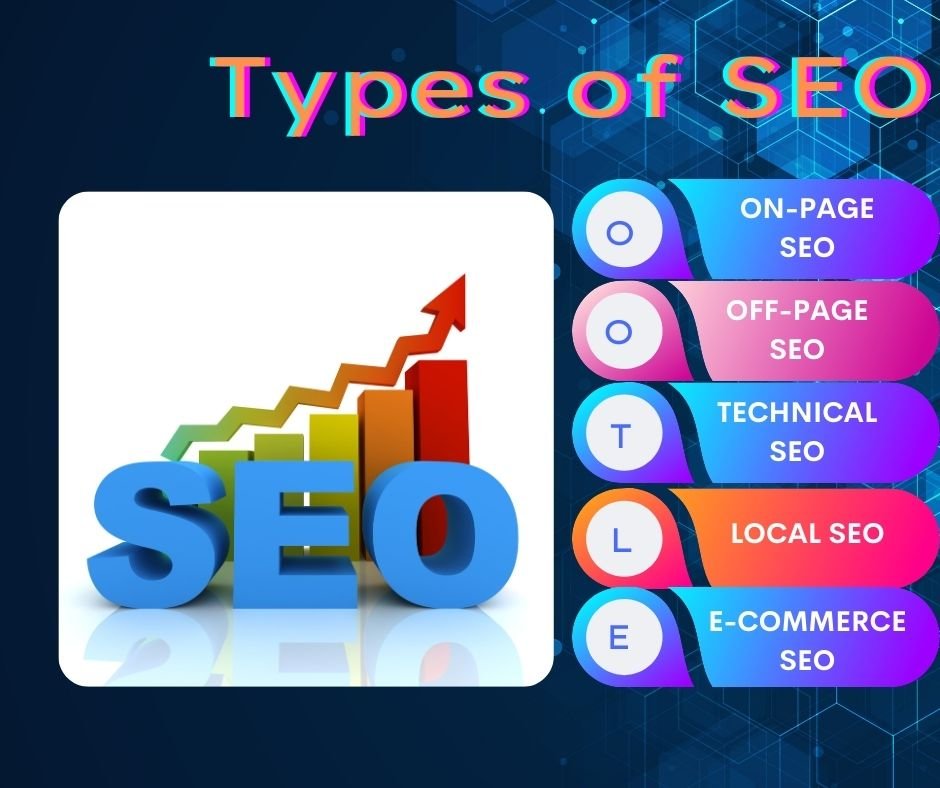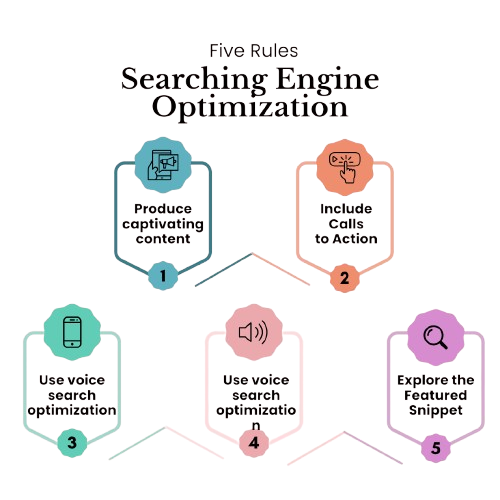The Ultimate Guide to SEO: MasteringSearch Engine Optimizationin 2025
Introduction to SEO
Search Engine Optimization (SEO) is the art and science of enhancing your website to increase its visibility in search engine results. When users search for products, services, or information online, SEO ensures your website appears among the top results. This visibility drives organic (unpaid) traffic, boosts brand credibility, and ultimately increases revenue.
As the internet becomes more competitive, SEO has transformed into a crucial digital marketing strategy for businesses, bloggers, and eCommerce websites. Whether you’re a beginner or an experienced marketer, understanding the principles and updates in SEO can give you a solid edge in the online world.
Why SEO is Important in 2025
In 2025, SEO is more critical than ever. Here’s why:
Organic Traffic Dominates: Over 53% of all website traffic comes from organic search.
Trust and Credibility: Users trust websites that rank higher on search engines.
Cost-Effective Marketing: Unlike paid ads, organic traffic doesn’t require continuous investment.
Long-Term Growth: A well-optimized site continues to attract traffic over time.
Voice & Mobile Search: SEO now involves optimizing for how people speak and use mobile devices.
Investing in SEO is not just a trend—it’s a long-term strategy that consistently pays off.
How Search Engines Work
Understanding how search engines like Google, Bing, and Yahoo operate is essential for mastering SEO.
Search Engine Basics:
Crawling: Search engines use bots (spiders) to scan web pages across the internet.
Indexing: The scanned pages are stored in a massive database (the index).
Ranking: When a user searches, search engines rank relevant pages using complex algorithms.
Key Ranking Factors:
Content quality and relevance
Backlinks from trusted sources
Mobile-friendliness
Page speed and user experience
On-page SEO signals (meta tags, headings, keywords)

Types of SEO
SEO is not a one-size-fits-all practice. It is categorized into several types:
1. On-Page SEO
Focuses on optimizing elements within your website such as:
- Keywords
- Title tags & meta descriptions
- Headers (H1, H2, H3…)
- Internal linking
- Image optimization
2. Off-Page SEO
Involves actions taken outside of your website to improve rankings:
- Backlink building
- Social media marketing
- Influencer collaborations
- Guest blogging
3. Technical SEO
Deals with backend elements that help search engines crawl and index your site:
- XML sitemaps
- Robots.txt files
- Core Web Vitals
- HTTPS and security
2. Off-Page SEO
Optimizes your site to attract local searches:
Google Business Profile
Local keywords
Reviews and citations
Keyword Research Explained
Keywords are the foundation of SEO. Keyword research helps you understand what your audience is searching for and how to match their intent.
Steps to Effective Keyword Research:
- Use tools like Google Keyword Planner, SEMrush, or Ubersuggest.
- Analyze competitor keywords.
- Focus on search intent: informational, navigational, transactional.
- Mix short-tail and long-tail keywords.
- Monitor keyword difficulty and search volume.
Choosing the right keywords helps you attract high-intent users who are more likely to convert.
On-Page SEO Best Practices
On-page SEO builds the foundation for your content to be discovered and appreciated by both users and search engines.
Key Elements to Optimize:
Title Tag: Make it clear, include your keyword, keep it under 60 characters.
Meta Description: Write an engaging summary (under 160 characters).
Headers: Use keywords in H1, H2, and H3 tags appropriately.
URL Structure: Keep it short, keyword-rich, and clean.
Internal Links: Connect related content to enhance navigation and distribute authority.
Image SEO: Add alt text and compress images for speed.
On-page SEO builds the foundation for your content to be discovered and appreciated by both users and search engines.
Off-Page SEO and Backlink Strategy
Google considers backlinks as “votes of trust.” The more high-quality backlinks you earn, the more authority your site gains.
Strategies to Build Backlinks:
Guest Blogging: Write for reputable blogs in your industry.
Skyscraper Technique: Improve existing popular content and ask backlinkers to link to your version.
Directory Submissions: List your site in credible directories.
Press Releases & Outreach: Gain attention from media outlets.
Social Media Sharing: Increase visibility and chances of earning links.
Avoid black-hat tactics like buying links—they can lead to penalties.
Technical SEO and Website Health
Technical SEO helps ensure that search engines can crawl, index, and rank your website efficiently.
Key Technical SEO Elements:
Mobile Optimization: Use responsive design.
Page Speed: Use tools like PageSpeed Insights to optimize loading times.
Secure Site (HTTPS): Must-have for trust and rankings.
Schema Markup: Helps search engines understand your content.
Fix Crawl Errors: Use Google Search Console to monitor issues.
Sitemap & Robots.txt: Submit your sitemap and configure robots.txt to guide search bots.
Regular audits keep your site healthy and Google-friendly.
Content & SEO — A Powerful Combo
Content is king—but only when paired with SEO. High-quality, SEO-optimized content ranks higher and keeps users engaged.
Tips for SEO-Friendly Content:
- Write for humans first, search engines second.
- Answer user questions and solve problems.
- Use your main keyword in the first 100 words.
- Include related keywords and synonyms.
- Use bullet points, short paragraphs, and visuals.
- Update content regularly to maintain relevance.
Evergreen, value-driven content establishes authority and attracts backlinks over time.

Most Frequently Asked Questions(FAQ'S)
SEO, or Search Engine Optimization, is the process of optimizing a website to improve its visibility in search engine results pages (SERPs). It involves using strategies like keyword research, content creation, on-page optimization, link building, and technical enhancements. Search engines like Google use algorithms to crawl, index, and rank content—SEO helps ensure your site appears among the top results when users search for relevant keywords.
SEO is a long-term strategy. Typically, noticeable improvements in rankings and traffic can be seen within 3 to 6 months, depending on factors like competition, domain authority, content quality, and the consistency of your SEO efforts. Unlike paid ads, SEO results grow over time and can bring sustainable traffic for months or even years.
In 2025, the most critical SEO ranking factors include:
High-quality, relevant content
Page experience and Core Web Vitals (speed, mobile-friendliness)
Backlinks from authoritative sources
Keyword optimization with search intent
Secure and well-structured websites (HTTPS, schema markup)
Search engines are also increasingly prioritizing user experience and intent-based search.
On-Page SEO refers to optimization techniques within your website—like content, meta tags, URLs, and internal links.
Off-Page SEO includes strategies outside your website, such as earning backlinks, brand mentions, social signals, and influencer outreach.
Both are essential and work together to improve your search engine rankings.
Yes, you can start SEO on your own using online tools and tutorials—especially for tasks like keyword research, content writing, and on-page optimization. However, for technical SEO, advanced strategies, or competitive industries, hiring an SEO expert or agency can help you achieve faster and more sustainable results. It all depends on your goals, time, and budget.
Future of SEO & Final Thoughts
What’s Coming in SEO:
Content is king—but only when paired with SEO. High-quality, SEO-optimized content ranks higher and keeps users engaged.
AI & Search Engines: Google’s AI is evolving; expect more emphasis on context and user behavior.
Voice Search: Optimize for natural language queries.
Visual Search: Image SEO will become even more relevant.
Search Experience Optimization (SXO): Focus on UX, not just keywords
Final Thoughts:
SEO is not a sprint—it’s a marathon. With consistent effort, high-quality content, and a strategic mindset, you can build a powerful online presence. Whether you run a personal blog, a corporate website, or an eCommerce store, SEO will remain a cornerstone of your digital success.
